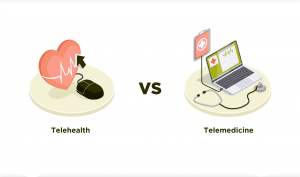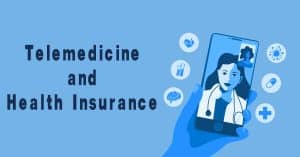
To protect themselves, many doctors started to provide consultation remotely over telephones, e-mails, instant messages, etc. Such a form of treatment is formally known as telemedicine.
The pandemic has been exhibiting its destructivity for about one and a half years now. The whole world is witnessing multiple waves of the corona outbreak, with newly formed strains of the virus. Whether the strain is new or old, the only prevention for coronavirus infection is maintaining ample social distancing and following proper hygiene on the personal front.
However, the primary problem stands with those who have already contracted the deadly virus and are in dire need of treatment.Needless to mention, doctors and health workers who are fighting at the treatment front are in the highest risk zone of contracting this disease.
What is Telemedicine?

Telemedicine can be defined as the propagation of medical health services of any kind via the use of electronic or telecommunication channels like telephone, e-mails, etc. remotely, where there is no tangible contact between the doctors and the patients.
Telemedicine has been evolving in the medical healthcare services for some time, but the recent outbreak of the pandemic has taken this branch of healthcare to the mass population.
Nowadays, it is common that only critical cases are treated in hospitals and the mild cases are taken care of within the confines of their respective homes and are treated remotely.
Before the outbreak, telemedicine was mainly used to treat those individuals who had lost their mobility and could not travel down to the doctors or hospitals for their treatment of those who stayed in extremely remote areas where there was no proper transportation or road to reach any medical facility quickly and safely.

The term telemedicine does not only include long-distance treatments with the help of electronic media but also consists of distance learning programs, meetings or supervisions of any kind involving medicine, conferences amongst various medical professionals, exchange of medical information, data management of health records, and system integration on the healthcare front all with the aid of remotely connected electronic or telecommunications media.
Hence, it is safe to assume that any healthcare service whether treatment or not when done remotely without any physical intervention.
Are telemedicine and telehealth the same thing?

To answer the question, one has to know that both of these terms were fairly originated in the United States. Hence, they have been used interchangeably.
Some agencies differentiate telehealth as the medical services which are non-clinical like medical training of some sorts, hospital administrative tasks, etc. whereas telemedicine is considered to be more of clinical nature, like examining patients, prescribing medicines, etc.
In the European continent, especially in the UK, both these terms come under the banner of e-health. The World Health Organization considers telemedicine as a wholesome term for all activities related to health care clinical, educational or administrative when done remotely via electronic channels.
Telemedicine and Health Insurance

While telemedicine is reaching for the skies with various kinds of technological advancements, the burning question that haunts the masses is whether medical health insurance would cover the costs incurred for the changes of the medical services rendered via telemedicine. The answer is simple and positive.
Almost all of the medical health insurance companies have policies that provide cover to telemedicine as well.
Moreover, medical malpractice is prevalent not only in regular medical facilities but also in telemedicine as well. To curb this burning curiosity, medical malpractice insurers have special coverage for such kinds of cases. All one needs to do is to ask the right question to the insurance agent or use the internet at their disposal to do the good groundwork before opting for the policy of their choice.
There are even specific policies where one can customize the range of cover required only for their establishment and not a general blanket cover.
Methods Deployed in Telemedicine

The modalities or methods that are considered to form the basis of telemedicine are quite simple. A fast and reliable internet connection must be available to all the parties who are involved in the job that is part of telemedicine. A good internet connection solves more than fifty percent of the problem at hand.
The methods of delivering telemedicine assistance can be categorized into 4 categories:
- Storage and subsequent forwarding is the first step towards telemedicine. This process involves storing medical records over a period and then sends those details to the doctors for offline assessment. The only use of electronic media here is the channel via which the records are sent like e-mail, telephone, etc.
- Monitoring remotely the patients of chronic diseases like cardiac issues, diabetes, gastric problems, etc. at regular intervals is another important pillar of telemedicine. These patients do not need active clinical care but a healthy lifestyle and regular check-ups with respective doctors, which can be very well done with remote monitoring.
- Real-time interactions with patients and providers are the prima facie of telemedicine. The doctor and patients can interact in real-time with the aid of electronic methods like video calls, instant messages, etc. This process helps in providing instant medical care in case of critical emergencies.
- Video Telephony can be called a special branch of real-time interactions but for people with special needs like the vision or the hearing impaired. Special video calling equipment is used for helping those individuals to have a better interaction with their medical providers
Telemedicine: Branching out
As we are progressing towards a more technologically advanced era, telemedicine is spearheading into reaching the masses. While the pandemic has opened a highway to telemedicine for medically treating the general population, it has also been used in complex areas like surgeries, radiology, psychiatry, neurology, trauma care, etc.
A combination of robotics and the high-end electronic channel is making such impossibilities possible.
Telemedicine can also improve economic viability because the need for travel to meet patients or doctors and maintaining infrastructure to manage patients physically would be reduced to a minimal amount, thereby saving for effort and costs.










